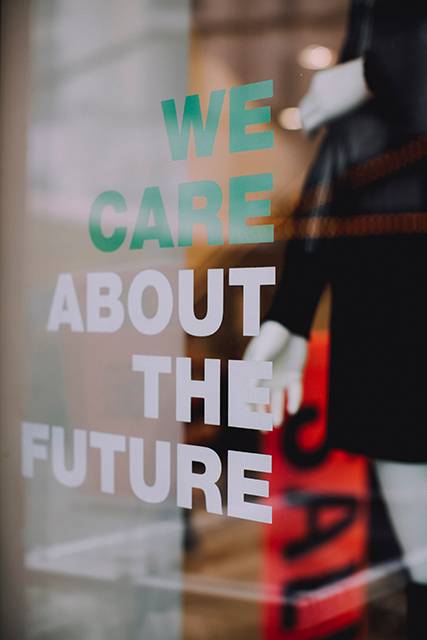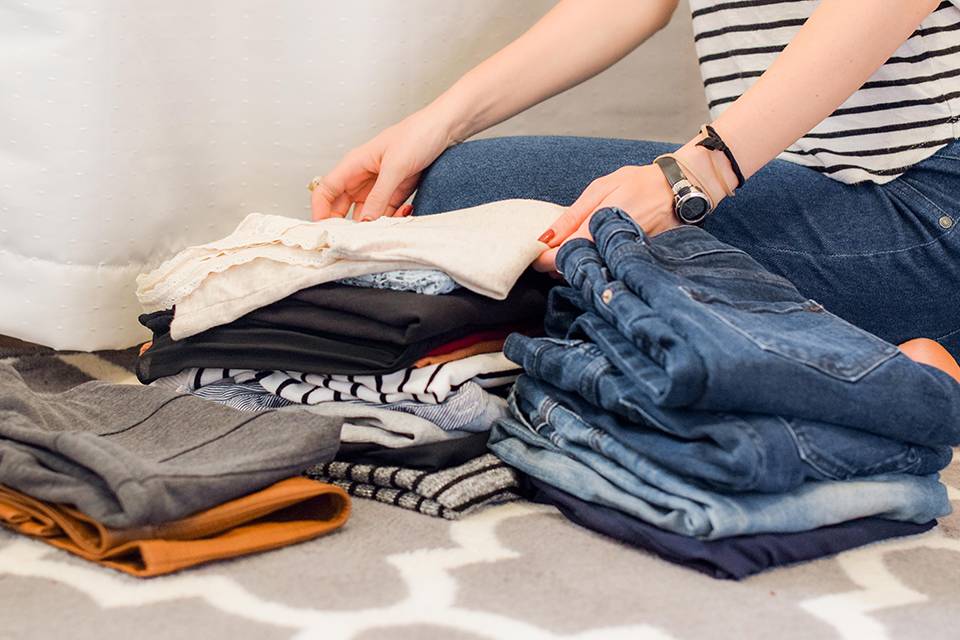A new business model has revolutionized the fashion industry, changing everything from how consumers shop to how clothes are produced. This model, called “fast-fashion,” has made trendy clothing affordable.
Fast fashion was the trend that would not die. While consumers were concerned about product quality, as well as the environmental and ethical issues surrounding the apparel production process and lifespan of a single garment, the treasure hunt experience was still too enticing for many to ignore.
The cruel paradox of fast fashion is that it makes clothing accessible to working-class women through its reliance upon even poorer women to produce it.
Today’s fashion business models do not support the needs of their customers. “Fast fashion” was built on the fact that people wanted access to the latest trends as quickly as possible and inexpensively.
It all changed with COVID-19.

The first lockdown regulations had a big impact on the fashion industry, with many people staying at home and many brands having to close their stores.
This crisis had a big impact on brands, but even more on the supply chain and workers involved, revealing more than ever its unhealthy structure.
Before the pandemic, it used to be that office workers needed suits and ties or pleated pants, long skirts, and heels to get through the week. By the early 1990s, that seemed to change by the tech firms in Silicon Valley pushing a business-casual look dominated by khakis. That trickled into other industries, as casual Fridays became common. Now, office apparel is just as casual on Monday as on Friday for many.
This has resulted in a point where people needed just one wardrobe due to there being so little differentiation between what people wear to work and on the weekends.
Neckties started disappearing, even in industries such as finance. Sneakers can be worn to any occasion, including weddings and religious services and soon people were wearing jeans to offices. The rise of casual clothing emerged.
It is easy to see why this is bad news for apparel companies. When you cut out an entire category of attire, there is less need to buy new clothes when fashions change. When there is a hot new color or pattern, maybe a twenty-something buys one new blouse to stay on trend and wears it to work and a night out. Before, she might have purchased two pieces, one for each setting.
The pandemic has compelled consumers to review their buying habits and choose products carefully. It has made Generation Z consumers aware of ethical issues surrounding fashion, including sustainability. And they are threatening the existence of fast fashion by seeking apparel that is more durable, sustainable, and ethically produced.
Partially staffed fast-fashion retailers are now struggling to find manufacturers that can produce clothing quickly enough to meet the demands of their customer base.

The fast fashion industry is also suffering due to a lack of consumers from low to middle-income families. Hit by loss of jobs and incomes, these consumers are shifting their focus from clothes and accessories to daily essentials.
It seems the pandemic may have simply hastened the slow death of fast fashion.
An awakening has been coming for several years and COVID-19 has now accelerated that.
There is the whole mantra of "buy less, buy better". Who needs fashion these days when you can express yourself through social media? Why buy that pricey new dress when you could fund a weekend getaway instead?
The COVID-19 pandemic has touched, changed, or completely derailed just about every area of life — including our wardrobes. Lockdown measures continue to keep many consumers out of brick-and-mortar retail operations. With so many jobs staying remote for the foreseeable future, sweatpants have become the de facto form of business attire.
Maybe pandemic is the road to changing behavior: It has been quite easy to point fingers when it comes to sustainability and ethics in the fashion industry. You could say that brands must be the ones to change, and then brands will turn around and say, well, consumers must demand it. All these behaviors fit within a system — and media also plays an especially important role in building awareness and sharing stories about the industry’s environmental and social impacts. That helps build consumer demand for something better, which then puts pressure on brands to do better. And then, ultimately, we elect government officials who will regulate these things so that it is not a choice that a brand does or does not make, it is just the rules of business.

Similarly, I think celebrities and influencers play a huge role in this world. Their business models tend to normalize disposability because they are rarely seen in the same thing twice.
That then trickles down to what the average person thinks is normal. It has been seen that Gen Z is embarrassed to be seen wearing the same things more than once. But this was pre-pandemic, so hopefully that has changed. But that cultural shift also requires an influencer waking up and saying, ‘Oh, I understand this is part of how I make money, but it’s also contributing to climate change. It’s also contributing to worker abuse, and I don’t want to be a part of that system.’
And these shifts can happen. If you look back even to the tobacco industry — there were all these exposés on how cigarettes cause cancer. Once that research was brought to light, people pushed for legislation that changed the rules about who could smoke and where, and that made smoking not cool, resulting in the number of smokers going down.
So, we see these shifts do happen, and they happen because of combined efforts and marriage of data, media, and advocacy.
The question yet remains, whether fast fashion will survive; if our knowledge of its economics and ethical failings, profound changes to our lifestyle, and even our mortality do not stop us from buying more stuff, there is anything that will.
Today’s reality is the fashion industry has been negatively impacted by the coronavirus outbreak on every imaginable level; production has ceased, retailers have closed, demand has plummeted.
And perhaps one day, and possibly soon, this journey will come to an end. Cheap labor is becoming a rare commodity, and the number of low-cost countries is dwindling.
The pandemic has been called “The Great Accelerator.”
RELATED TOPICS:#Apparel,Sanjay Lal
Leave a comment
Our email address will not be published. Required fields are marked *







2 Comments
GauraveMar 23, 2021 at 11:07 am
COVID-19 has indeed turned out to be a big game changer not just for the fashion industry but marriages and family functions were a breather to some extent and now when the people are out in the streets fashion can also see a respite. A very informative and a good collection of thoughts which is a good insight to the apparel industry, written by Mr. Sanjay.
Rahul MathurMar 19, 2021 at 19:42 pm
The pandemic has created a paradigm shift in consumer buying behaviour & you have correctly mentioned that buyers need to shift to ‘ethical’ buying. The trend of Fast Fashion, I think, could be proportionate to the return of same levels of purchasing power of buyers as it was during pre covid times. So, could be an impulse buying, upon monetary strength of the buyer.